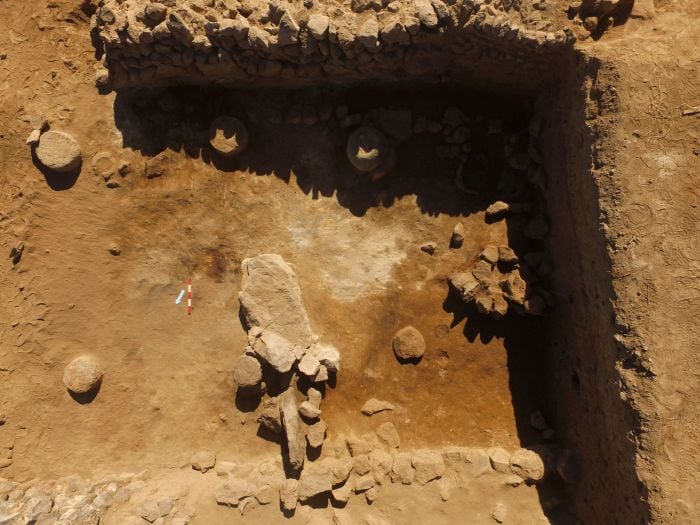For ten years now, a team of Polish and Armenian archaeologists have been digging in Metsamor, a sprawling ancient city erected in 4,000 BCE about 20 miles south of the Armenian capital. This spring, they came across a “golden tomb” filled with stunning jewelry and artifacts. Now researchers have discovered something even more surprising – a structure they believe was an ancient bakery, based on traces of flour found at the site which was at one point destroyed in a fire.
Archaeologists have started the excavations to learn more about the legacy of the giant, fortified settlement during the Iron Age Urartu kingdom. Focusing on the architectural remains of a burnt building that was in use in the lower town from around 1200 to 1000 BCE, they identified “two rows of a total of 18 wooden columns supporting a reed roof with wooden beams”, according to a release by Science for Society of Poland. All that remained were the stone bases of the building’s columns and scorched fragments of its beams and roof. While the structure was originally built as storage, the researchers say there is evidence that several ovens were added later.

Flour spotted from above in Metsamor. Photo by Patryk Okrajek
Within these collapsed remains, the team spotted a large, inch-thick layer of white dust. At first they assumed it was ash, but under the guidance of Professor Kryzstztof Jakubiak, the team used a process of flotation to wet the mysterious powder and determine its true composition. “This selected a large portion of the organic matter that was decoded and recognized as remnants of wheat flour,” Jakubiak told Artnet News. “The samples were examined by an expert archaeobotanist, who confirmed this preliminary supposition.”
Although the flour found is not edible at this point, long ago the site once contained 7,000 pounds of the basic ingredient, pointing to a bakery built for mass production. Archaeologists have discovered similar bakeries in the area, but as Jakubiak noted in the official statement, Metsamor is now one of the oldest finds in the southern and eastern Caucasus. Additionally, Transcaucasian cultures sometimes used flour for divination, opening further questions for next season’s researchers to discover at the site, when rooms adjacent to the ancient bakery are explored.
Follow Artnet News on Facebook:
Want to stay one step ahead of the art world? Subscribe to our newsletter to receive breaking news, revealing interviews and incisive reviews that move the conversation forward.
